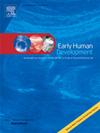新证据支持女性在先天性异常和神经发育障碍患者中的保护作用
IF 2
3区 医学
Q2 OBSTETRICS & GYNECOLOGY
引用次数: 0
摘要
染色体性别对人类疾病的影响是公认的,但研究不足,特别是在具有早期发育起源的疾病中。来自性染色体或常染色体的拷贝数变异(CNVs)导致不同的基因表达,可能影响女性和男性的疾病偏好。染色体微阵列是检测CNVs的标准方法,在先天性异常和神经发育障碍患者中诊断率约为15%,这是该分析的主要适应症。在这里,我们探讨了在染色体微阵列患者中表型患病率和CNV检出率的性别差异,以确定性别偏性性状和CNV。我们的队列包括1412例患者,男女比例为1.6:1。尽管人数众多,但通过这种分子核型,女性更有可能得到遗传诊断。大多数患者有神经发育障碍和其他合并症。女性出现合并症的频率更高,但诊断率的差异仅在表型更简单的组(≤2个合并症)中才显著。先天性心脏病、泌尿生殖系统异常和自闭症谱系组的诊断率较高。所有这三种类型都显示出男性的人口优势,支持女性更高阈值的责任模型。本文章由计算机程序翻译,如有差异,请以英文原文为准。
New evidence supporting female protective effect in patients with congenital anomalies and neurodevelopmental disorders
The influence of chromosomal sex on human diseases is recognized but underresearched, particularly in diseases with early developmental origins. Copy number variations (CNVs) from sex chromosomes or autosomes, which cause different gene expressions, may influence the disease preferences in females and males. Chromosomal microarray is a standard method for detecting CNVs, with a diagnostic yield of approximately 15 % among patients with congenital anomalies and neurodevelopmental disorders, the primary indications for the analysis. Here, we explore sex disparities in phenotype prevalence and CNV detection rates in patients referred for chromosomal microarray to identify sex-biased traits and CNVs. Our cohort comprises 1412 patients, with a male-to-female ratio of 1.6 to 1. Despite being outnumbered, females are significantly more likely to receive a genetic diagnosis through this type of molecular karyotyping. Most of the patients have neurodevelopmental disorders with other comorbidities. Females have a higher frequency of comorbidities, but the difference in diagnostic yield is significant only in the groups with simpler phenotypes (≤2 comorbidities). Higher diagnostic yield is revealed for congenital heart disease, urogenital anomalies, and the autism spectrum group. All three categories show populational preponderance in males, supporting a higher threshold liability model in females.
求助全文
通过发布文献求助,成功后即可免费获取论文全文。
去求助
来源期刊

Early human development
医学-妇产科学
CiteScore
4.40
自引率
4.00%
发文量
100
审稿时长
46 days
期刊介绍:
Established as an authoritative, highly cited voice on early human development, Early Human Development provides a unique opportunity for researchers and clinicians to bridge the communication gap between disciplines. Creating a forum for the productive exchange of ideas concerning early human growth and development, the journal publishes original research and clinical papers with particular emphasis on the continuum between fetal life and the perinatal period; aspects of postnatal growth influenced by early events; and the safeguarding of the quality of human survival.
The first comprehensive and interdisciplinary journal in this area of growing importance, Early Human Development offers pertinent contributions to the following subject areas:
Fetology; perinatology; pediatrics; growth and development; obstetrics; reproduction and fertility; epidemiology; behavioural sciences; nutrition and metabolism; teratology; neurology; brain biology; developmental psychology and screening.
 求助内容:
求助内容: 应助结果提醒方式:
应助结果提醒方式:


